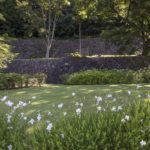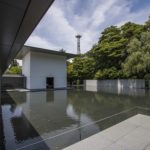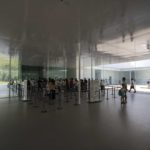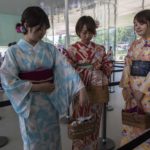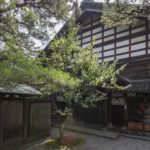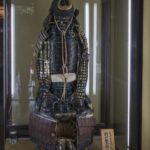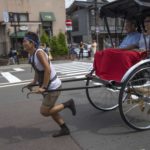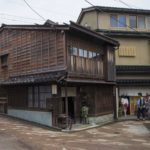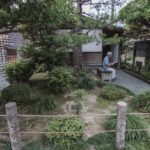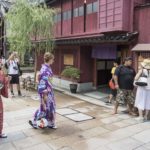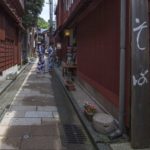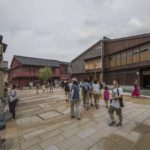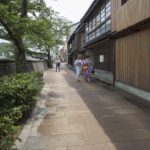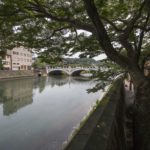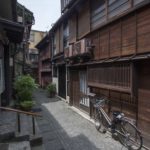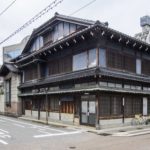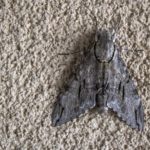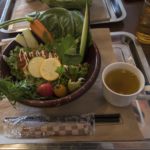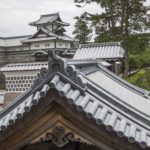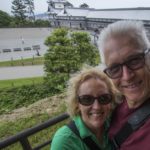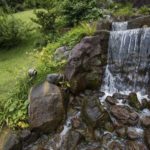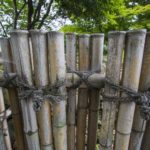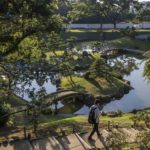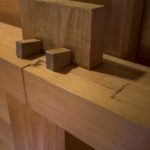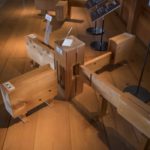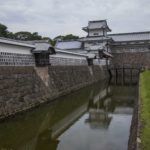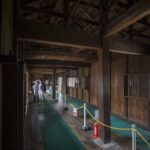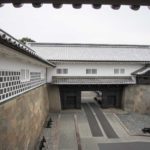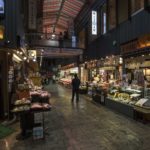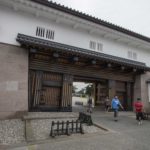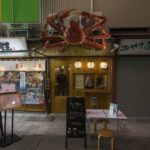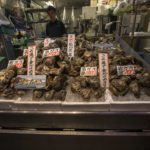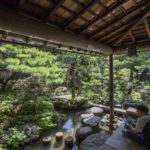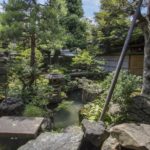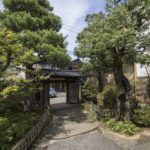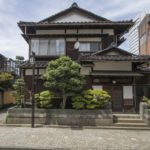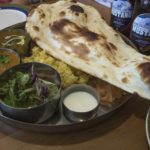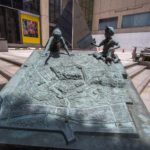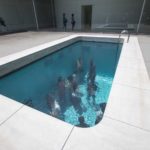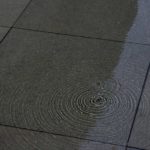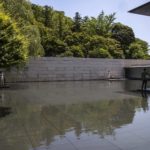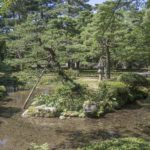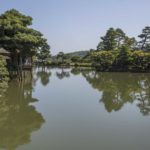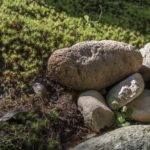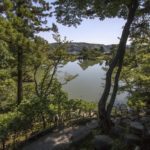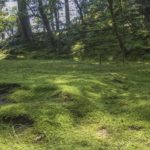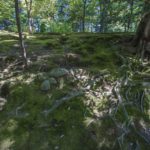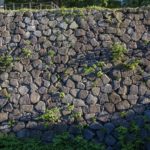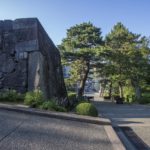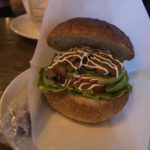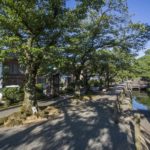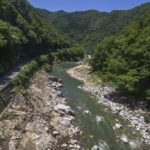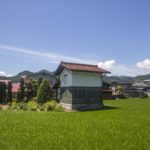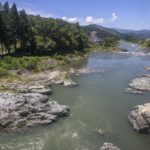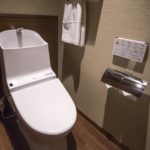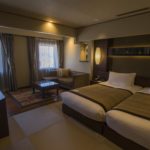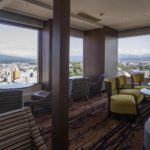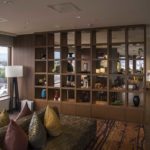Takayama to Kanazawa
After savouring our traditional Japanese breakfast at our cute little ryokan in Takayama, we walked the conveniently short distance to the station and waited in the air conditioned comfort of the new terminal building for our journey to the next town on our itinerary. With only one change of train required, our journey was to take 128 min, so the purchase of a little sushi pack for snacking was an undeclared necessity, despite eating our fill at breakfast.
It was not long before the cascading rivers and mountains gave way to manicured townships and eventually the city of Kanazawa. As with our other rail experiences in Japan, this one arrived at its destination on time to the exact minute. We grappled with the bus to the hotel, not realising that the back door was for entering, not exiting, and we used the ticket machine both upon entering and leaving, which wasn’t necessary. It’s all a learning curve.
We were too early for our check in at the ANA Holiday Inn Kanazawa Sky, but we left our luggage with the smiling young woman at reception and amused ourselves in the basement food hall of the department store beneath the hotel until 2 o’clock. [Article on ANA Holiday Inn Kanazawa Sky]
It’s always stimulating and sometimes challenging the first 24 hours in a new city. We made the most of our afternoon to get to know the area around our hotel, and were thrilled at the convenience of our location to all the things we wanted to see during our stay.
Our focus was finding a meal for a very late lunch and decided on a little organic vegan food café (a rare thing in Japan!) called ‘Los Angeles in Kanazawa’ that had great reviews on TripAdvisor. Their menu range was not extensive, but there was still enough choice to please most. We followed the suggestions in those reviews and ordered ginger ‘beef’ burgers with extra tomato and avocado. They were perfect! Not only a modest size (which we loved) but the best fake beef I think I have eaten. I am not usually a fan of the soy meat substitute, but this one was a revelation! The bun, which can often be a let-down, was delicious.
There was not much left of the afternoon after our very late lunch, so we enjoyed a stroll in the nearby Kanazawa Castle Park, admiring the views and planning our next couple of days. It’s of great assistance to visitors that there are big maps on signs throughout the city, especially in tourist areas, to help orient oneself. Very handy, loved it.
Kenrokuen
The next morning we set out after our filling buffet breakfast, slightly startled by the 28 degree humidity at 8am. Our leisurely walk took us to the Kenrokuen – one of the official top three gardens in Japan. The guidebooks recommended early morning or late afternoon as being the most tranquil – no megaphones, guides and tourists! The thought of the tourist crush complete with megaphones made me laugh, until I experienced it first hand, and I heard them coming before I could see them.
It was easy to see why this garden is one of the top three in the country. Pre-visiting hordes, it was very peaceful to stroll around, and even after their arrival, there were opportunities to escape their presence and find a spot for a rest and a ‘ponder’. The design of the grounds was flawless in terms of hills, ponds and winding paths, all manicured beautifully in the Japanese way, the cultural attention to detail apparent in the work of the horticulturists, too.
This is a country where I am not unusual in my choice of umbrella as parasol – most women seem to use them (although theirs are much more colourful and ornate than my travel-lite dark grey specimen). And if they weren’t using an umbrella, they had hats on – there were no bare heads to be seen!
Seisonkaku Villa
In the northeast corner of the Kenrokuen garden is the Seisonkaku Villa, built by the 13th Daimyō for his mother, the dowager, just over the hill from the castle (nearby, but not TOO close!). It is one of the finest remaining samurai villas in Japan.
Unfortunately, no photography was allowed in this special and beautiful building. While there was much to admire, and many aesthetics to savour, the highlight for me was a 20 metre-long verandah that had no support posts to mar the view into the garden – it had a canterlevered roof that didn’t need reinforcement along its frame. On this same verandah, the floorboards were designed to ‘sing’ when walked on, not only prompting an aural serenity, but it was also an effective security measure – you could hear anyone coming.
D.T. Suzuki Museum
From the Seisonkaku Villa it was a relatively short walk to the D.T. Suzuki Museum, a small museum commemorating the life and works of the Buddhist philosopher. Opened fairly recently in 2011, it exhibits his writings which allows the visitor to learn more about his life and philosophy. “The architecture of the museum serves as an interpretation of D.T. Suzuki’s life and religious scholarship; its use of clean, simple lines and open spaces causes visitors to pause and reflect” (japan-guide.com).
The vibe in the whole complex was one of relaxation, meditation and mindfulness. The ‘contemplation room’ was at the centre of this cocoon of peace, with calming views of the still water promoting serenity and harmony in its inhabitants.
The 21st Century Museum of Contemporary Art
Could’ve stayed longer getting our zen on at the Suzuki Museum, but our stomachs dictated otherwise. The 21st Century Museum of Contemporary Art stood between us and our choice of restaurant for lunch, so we paid it a visit.
After the other attractions we had seen in the morning, our expectations may have been too high for this one. While the building itself was appropriately interesting and pleasantly simple for such a museum, the exhibits were only ‘ok’. There was nothing there that truly inspired or affected, apart from the pool installation, which was a nice diversion – you could go downstairs and be ‘under water’ in the pool while the rest of the audience were peering down at you from above.
Nagamachi Area
On our way to the Nagamachi area, we stopped in the Korinbo district at a small Nepalese and Indian restaurant called Aashirwad. We shared a tasty thali with two curries, salad, naan and rice and enjoyed every bite.
Refuelled and eager for more afternoon adventures, we walked the few meters west of Korinbo to Nagamachi. This is a small area of cobbled streets and old mustard walled houses, where samurai and rich merchants once lived, such an atmospheric area, only a few streets, but totally charming.
We visited Nomura House, which was a former Samurai home. The Nomura House was pretty much the perfect Japanese home – not too large, but with plenty of areas looking out into its garden. The rooms were decorated with intricately painted screens and polished wood, with interesting wooden ceilings. Also visiting while we were there was a trio of women in traditional dress, looking so appropriate for the environment.
Kanazawa Castle Park
The next morning we wandered through the Omicho Market a bit after 9am on our way to Castle Park. It was surprising to see stalls still shut in a place that is supposedly a working market that has its fish and seafood in before 6am. Maybe it’s only the fishmongers who need to open so early! It’s much busier in the afternoon, and its close proximity to our hotel meant we could pop down and get what we needed at pretty much any time of the day.
Made our way to the Kanazawa Castle Park and spent the whole morning there. It would have once been such an impressive mountain of royalty. What exists now is a very small section of the castle that was completely restored in 2010 (at a cost of 4.6 billion JPY). The model of the original castle in this restored section shows just how many buildings once existed in the keep. It was a massive complex.
We met a delightful old man in the Ishikawabashi Gate of the castle, who joked and smiled with us in broken English, mainly about the height of the doorframes making it difficult for John to enter and exit. He was a gorgeous soul who lightened my heart.
Continuing our exploration of the park area, we came to Guokusen’inmaru Garden, which we scooted past on our first afternoon walk through the grounds. This time we descended the stairs into the charming, compact plot, complete with pond and a waterfall that had been rediscovered in the excavations of the area. It was much more pleasant to visit in the morning rather than the heat of the afternoon.
Due to the vicinity of the café, ‘Los Angeles in Kanazawa’, as well as its tasty food, we paid a second visit, where we had the organic lunch deal of a salad, soup and ginger ‘beef’ and rice bowl. My body was singing with good health after this meal. Shame I had to go and pollute it with beer and chips while watching Netflix later in the afternoon!
Geisha Districts of Kanazawa
There are three traditional Geisha districts in Kanazawa, and our afternoon was spent exploring two of them: Kazue-machi Chaya and Higashi Chaya. The first is quite small, really only a couple of laneways, all tiny and compact and cute, right on the river.
Higashi Chaya district is the biggest and most traditional of the three in Kanazawa. Visiting this area was almost like being in a Geisha theme park – it looked too perfect to be real (and it was complete with a corner block across the main road from the precinct to park the tour buses!). We didn’t see any true Geishas, but definitely saw young women (and some with their boyfriends) in traditional dress out for a Sunday stroll. They were exquisite, but with a funky edge to their look, some with dyed blonde hair, or new hairstyles, displaying modern, colourful prints on their yukatas* and of course, all holding smartphones high for their ‘selfies’, an incongruous, modern, vane necessity.
Stepping back in time in the Geisha districts was a fitting way to end our Kanazawa visit, and gave us a taste of what was to come in Kyoto.
* Yukatas – casual summer kimonos
Our Japanese journey continues with Kyoto…
Accommodation: ANA Holiday Inn Kanazawa Sky
Click on any image below to view as gallery
- Flowers and stone wall, Kenrokuen garden, Kanazawa
- The contemplation room, D.T. Suzuki Museum, Kanazawa
- Lobby of the 21st Century Museum of Contemporary Art, Kanazawa
- Dressed up and ready to see some art at the 21st Century Museum of Contemporary Art, Kanazawa
- Hotdog sign, Nagamachi area, Kanazawa
- Old merchants houses, Nagamachi area, Kanazawa
- Armour on display in the Nomura House, Nagamachi area, Kanazawa
- Fun on the run, Kanazawa, Japan
- Weathered building in Higashi Chaya Geisha District, Kanazawa, Japan
- Even the public toilets have lovely gardens in Higashi Chaya Geisha District, Kanazawa, Japan
- Old and new, Higashi Chaya Geisha District, Kanazawa, Japan
- Traditional dress, Higashi Chaya Geisha District, Kanazawa, Japan
- Laneway in Higashi Chaya Geisha District, Kanazawa, Japan
- Tourists in the Higashi Chaya Geisha District, Kanazawa, Japan
- Girls in traditional dress in the Kazue-machi Chaya Geisha district, Kanazawa
- Old bridge, Kazue-machi Chaya Geisha district, Kanazawa
- Tiny street in Kazue-machi Chaya Geisha district, Kanazawa
- Street corner near the Geisha districts, Kanazawa, Japan
- Close up of moth, Kanazawa, Japan
- Vegan ginger ‘beef’ at ‘Los Angeles at Kanazawa’ cafe
- Salad at ‘Los Angeles at Kanazawa’ cafe
- Gables of Kanazawa Castle, Japan
- Selfie at Kanazawa Castle, Japan
- Waterfall rediscovered during excavations of Kanazawa Castle
- Knots in the garden fence, Kanazawa Castle Park, Japan
- Guokusen’inmaru Garden in Kanazawa Castle Park, Japan
- Close up of joinery in Kanazawa Castle, Japan
- Samples of joinery in Kanazawa Castle, Japan
- Kanazawa Castle Moat, Japan
- Interior of Kanazawa Castle, Japan
- Wonderfully restored Kanazawa Castle, Japan
- Omicho Market, Kanazawa, Japan
- Northern gate of Kanazawa Castle
- Crab restaurant, Omicho Market, Kanazawa
- Oysters at Omicho Market, Kanazawa, Japan
- Reading and koi, the Nomura House, Nagamachi, Kanazawa
- The peaceful garden at Nomura House, Nagamachi, Kanazawa
- Entrance to the Nomura House, Nagamachi, Kanazawa
- Nagamachi area of Kanazawa, Japan
- Thali at Aashirwad Restaurant, Kanazawa, Japan
- Model of Kanazawa
- Pool installation, 21st Century Museum of Contemporary Art, Kanazawa
- A bee in the meditation pond at D.T. Suzuki Museum, Kanazawa, Japan
- D.T. Suzuki Museum, Kanazawa, Japan
- Ancient tree needing support, Kenrokuen Garden, Kanazawa
- Lake and tea house, Kenrokuen Garden, Kanazawa
- Rocks and groundcover, Kenrokuen Garden, Kanazawa
- Lakeview, Kenrokuen Garden, Kanazawa
- Mossy bank, Kenrokuen Garden, Kanazawa
- Moss and tree roots, Kenrokuen Garden, Kanazawa
- Ancient stone wall and ferns, Kanazawa Castle Park, Japan
- North entrance to Kanazawa Castle Park, Japan
- Organic vegan ginger ‘beef’ burger at ‘Los Angeles in Kanazawa’, Japan
- Kanazawa street, Japan
- River and road, train journey from Takayama to Kanazawa, Japan
- Rice fields and houses, train journey from Takayama to Kanazawa, Japan
- River view from train journey, Takayama to Kanazawa, Japan
- Many buttons on the facilities in the ANA Holiday Inn Kanazawa Sky
- Traditional Japanese Suite in the ANA Holiday Inn Kanazawa Sky
- Public lounge area of the lobby in the ANA Holiday Inn Kanazawa Sky
- The lobby of the ANA Holiday Inn Kanazawa Sky

